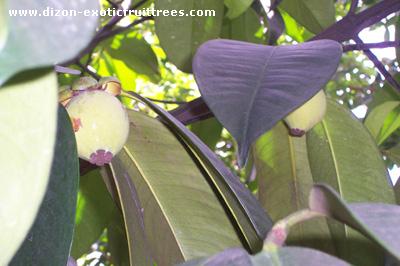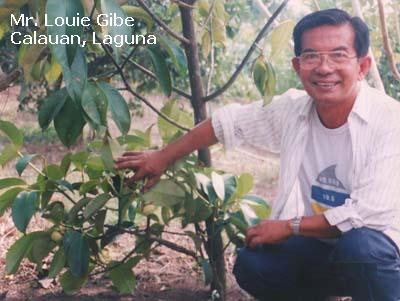|
Varietal Selections |
|
|
 |
 |
|
| MANGOSTEEN |
|
 |
Mangosteen
is regarded as 'queen of tropical fruits' with
unlimited export marker because of being a health
fruit. One of the few fruit trees that do not
require spraying against pests and disease is
Mangosteen. This is because no serious pests and
diseases have been observed to attack this tree.
Borers sometimes attack the fruit but because of its
thick rind, the borers do not reach the edible
portion. |
|
|
Mangosteen is often sold as P120 per kilo, and since there is
not much competition, the price does not usually drop during
the peak season. This also yields bountiful harvest. As Dr.
Pablito Pamplona of the University of Southern Mindanao
says, there are mangosteen trees that yield about 200 to 300
kilos per tree. |
| |
|
The prospect of
mangosteen |
|
Manila Bulletin, Home & Garden, Tuesday, July
13, 1999 |
|
Mangosteen at CLSU |
|
Manila Bulletin, Agriculture, Thursday, March
22, 2001 |
|
Mangosteen planting
at CLSU |
|
Manila Bulletin, Agriculture, Saturday, July 15,
2000 |
|
| |
Its fruit is also a genuine health food since every
100 grams of it contains up to 19 milligrams of
potassium, 7 mg of sodium and calcium, 4.2 mg of
Vitamin C, 4 mg of Phosphorus, 1 mg of iron, and
several mg of Vitamin B1, Vitamin B2 and Niacin
(Manila Bulletin, Nov. 13, 1999).
Mangosteen should be planted in areas with 70% shade
(or more) or in between shade of other fruit and
forest trees.
|
 |
|
| |
The
leaves are easily sun-scorched, and that damages the green
chlorophyll.
In Central Luzon State University, more than 100,
mangosteen seedlings have been planted along the University
Avenue's shaded are with only minimal care.
In areas with limited space, grafted mangosteen, which
needs only little space, can be planted. As a decorative
plant, a grafted mangosteen can be planted on big pots and
can serve as an indoor plant.
To maximize the production per unit area, grafted
mangosteen can be planted in between plants with shade.
|
|
|

